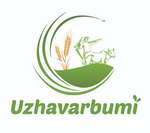Raw Milk vs Pasteurised Milk
Author : Team Uzhavarbumi
Updated : 09/Aug/25

For generations in Tamil Nadu, milk wasn’t something we questioned. It came fresh, straight from the cow, often our own, or our neighbour’s. We boiled it at home, stored it, and consumed it within a day or two. That was milk to us. Then came packaged options: pasteurised, homogenised, standardised, labelled with dates and processed to stay ‘fresh’ longer.
But here’s the real question: When milk undergoes so much processing, is it still milk in the way we know and trust it?
What’s the difference, really?
-
Raw milk (boiled before consumption) is fresh milk straight from the cow. It’s not processed in factories, but is usually boiled at home to ensure safety.
-
Pasteurised milk is heated to about 72°C for 15 seconds in a factory to kill harmful microbes and extend shelf life. It is then chilled, packed, and sent for delivery.
Pasteurisation: A Solution… or a Compromise?
Pasteurisation was a public health solution introduced to reduce outbreaks of diseases like typhoid and tuberculosis, especially where milk travelled long distances or was poorly handled. In that context, it helped.
But we often forget that pasteurisation doesn’t just kill harmful microbes, it kills the good ones too.
Enzymes and probiotics that aid digestion? Gone. Heat-sensitive vitamins like B2 and B12? Reduced. The milk becomes more stable, yes, but at a nutritional cost.
Learn more on What is in Fresh Cow Milk.
A Cultural and Biological Perspective
Most people in Tamil Nadu, and across India, have consumed raw milk (boiled at home) for decades, and our bodies have adapted to it. Just like a calf builds immunity from its mother’s milk (even with exposure to E. coli or Salmonella), many of us have developed microbial tolerance over generations.
If raw milk were as dangerous as some claim, wouldn’t entire communities have fallen sick years ago?
Of course, the quality of raw milk matters. It should come from healthy cows, nurtured in hygienic conditions, and handled properly. That’s the foundation.
Is Pasteurised Milk Always Safer?
Let’s pause here. Pasteurisation heats milk to ~72°C, but many of us boil it again after bringing it home. This second round of heating can reduce the nutritional value even further. What remains might be little more than white water with residual fat.
And there’s something else: we don’t always know when the pasteurised milk was procured. Processing makes it possible to extend shelf life and mask age, but that doesn’t necessarily mean the milk is fresher or more nourishing.
FSSAI takes a stand on how your daily glass of milk is purer.
Why Do Some People Struggle with Milk Today?
Lactose intolerance is commonly blamed on bacteria. But it’s not that simple. Some people struggle with digesting the sugar (lactose) in milk due to a genetic variation in lactase enzyme production.
But intolerance can also be linked to:
- Fat content in undiluted milk, especially in children
- Loss of enzymes during processing, which help in digestion
- Over-processing that strips milk of its natural balance
This is why many traditional households dilute milk with water when giving it to children, a practice born out of understanding the body, not just taste.
FAQs
1. Is pasteurised milk healthier than raw milk?
Not necessarily, pasteurisation increases safety but can reduce nutrients.
2. Does boiling pasteurised milk destroy nutrients?
Yes, double heating can further lower vitamins and probiotics.
3. What’s the safest milk to drink in Tamil Nadu?
Hygienically handled fresh milk from trusted farms, boiled at home, is one of the safest options.
So... Which Milk Should You Choose?
There’s no single answer. It depends on:
- Where you live: Do you have access to clean, fresh milk from trusted sources?
- Your body’s tolerance: Are you lactose intolerant? Do you face digestive issues with certain types of milk?
- Your values: Are you looking for milk that’s local, natural, and less processed?
If you can access fresh milk from healthy cows and you're boiling it properly, that’s still one of the most wholesome choices. It’s milk in its truest form, with nutrients, enzymes, and a living connection to nature.
But if your only option is pasteurised milk, then choose wisely. Know the source, check the fat content, and avoid unnecessary reboiling.
We’re not here to glorify raw milk or demonise pasteurised milk. We're here to ask: what is real milk for you?
When milk comes from a healthy cow, fed well, respected, and reaches you without over-processing, it nourishes more than just your body, it connects you to the land and your values.
If you’re in Chennai, try our farm fresh cow milk delivered from local farmers to your home.
We've made a video to represent boiling Fresh Cow Milk vs Pasteurised milk visually.
So, don’t just choose milk based on the label. Choose based on care, context, and common sense.
